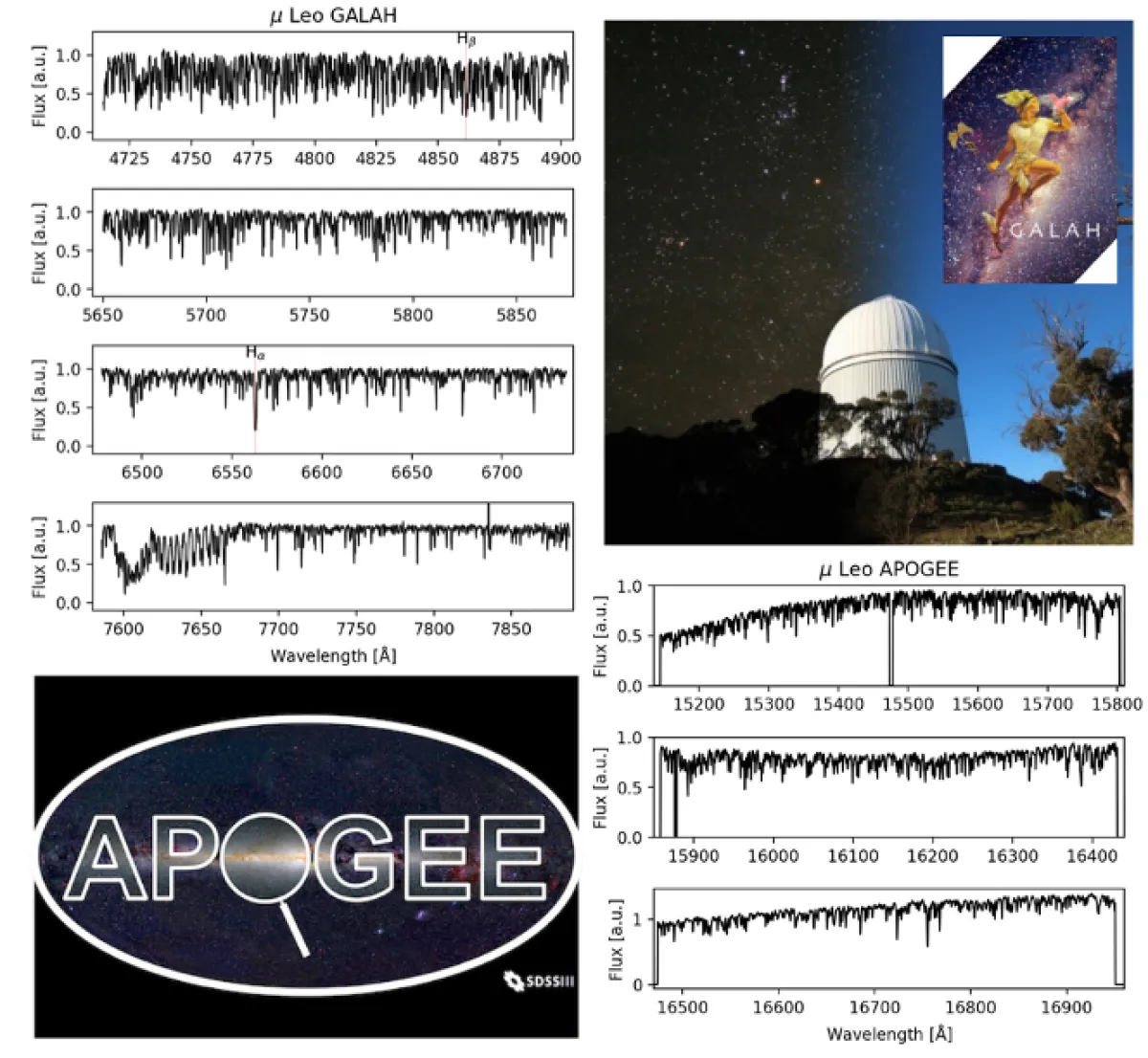Uniting optical and infrared spectroscopy with GALAH and APOGEE
In this project, the idea would be to combine the publicly available GALAH and APOGEE spectra and analyse them together: We should be able to measure up to 40 different elements from hundreds of lines and provide the community with reference values.
Research themes
Project status
Content navigation
About

Large-scale stellar spectroscopic surveys, like Galactic Archaeology with HERMES (GALAH) operating in the optical regime and the Apache Point Observatory Galactic Evolution Experiment (APOGEE) in the infrared regime, are collecting high-resolution spectra of more than a million spectra. More than 20,000 stars are even observed by both surveys. But these surveys have different analysis setups and currently deliver rather different results (more than we expect and can deal with if we want to combine these surveys). Studies that aim at the exploration of larger volumes of our Milky Way, will need to be able to combine these surveys. And this combination is only possible, if we have references, so called benchmark stars with benchmark values.
In this project, the idea would be to combine the publicly available GALAH and APOGEE spectra and analyse them together: We should be able to measure up to 40 different elements from hundreds of lines and provide the community with reference values.
You would setup a spectrum analysis for a Solar spectrum to familiarise yourself with the analysis mechanism and then expand these to a set of 30 stars covering different stellar parameters. Depending on how far you want to take the theoretical side of this, you could dig into the difference of the APOGEE and GALAH measurements from a modelling perspective, e. g. assumptions of the atmosphere modelling via 1D Local Thermodynamic Equilibrium (LTE) versus 3D non-NLTE effects, atomic data.

